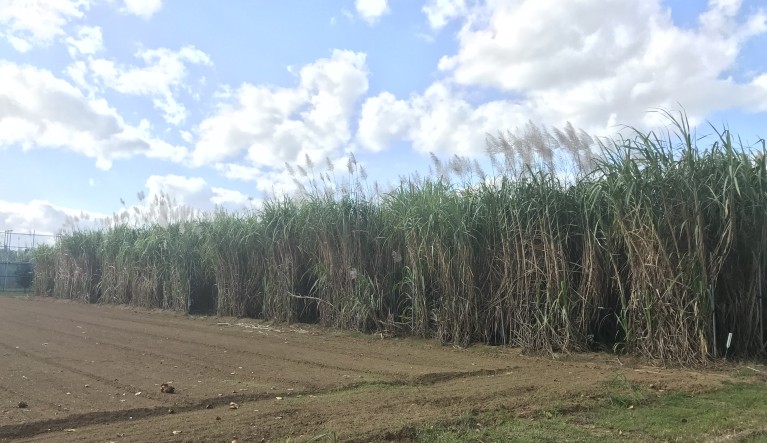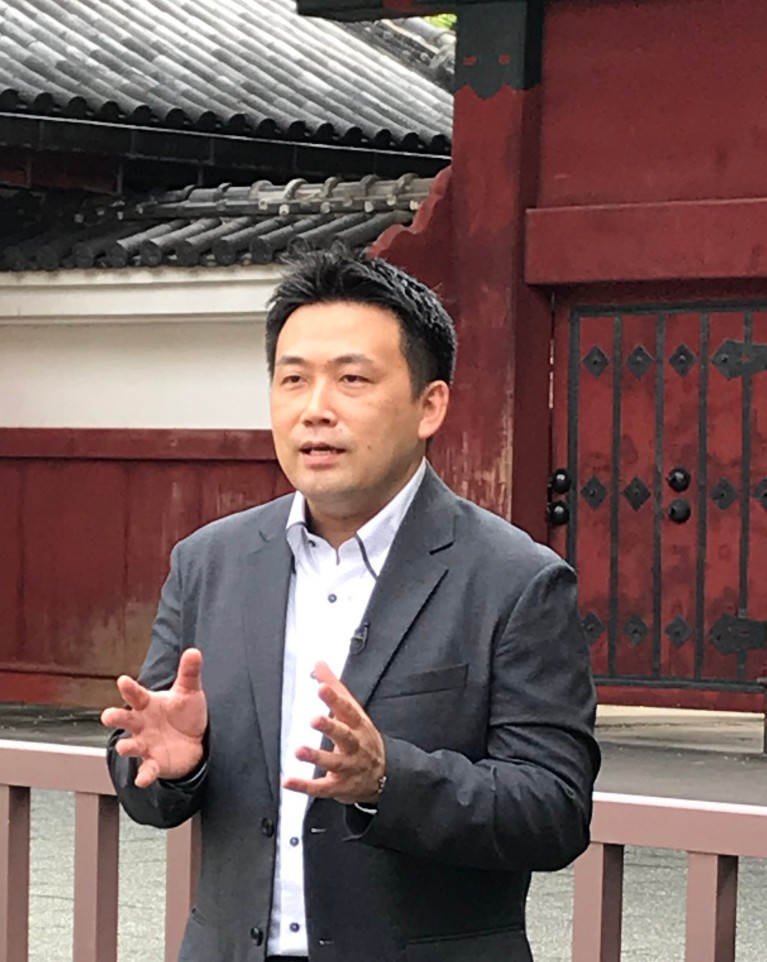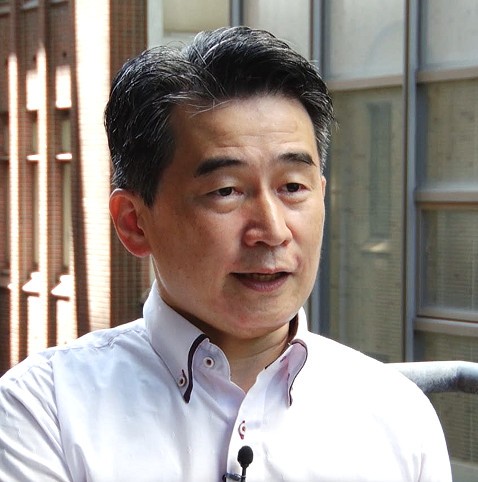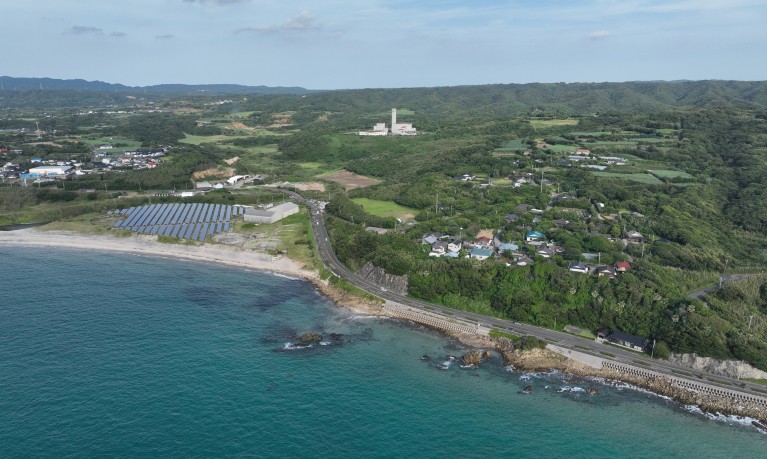
Sugarcane farmers on the island of Tanegashima in southern Japan are slowly switching to two new cultivars to boost sugarcane production and the biomass available for renewable energy generation.
Tanegashima, a small island off southern Japan, home to about 30,000 people, is seeking to boost the proportion of renewable biomass energy in its energy mix. Sugarcane bagasse, or pulp, a waste product of the sugarcane industry — a major employer in Tanegashima — is a socially and economically preferred source of biomass for energy production on the island, according to a consultation with more than 1,400 people from the community, institutions, government and industry.
“But the island’s one sugar mill, which already produces electricity via a system that runs off biomass from the leftover stalks and leaves of sugarcane, needed more base material to service the energy needs of the island,” explains Yasunori Kikuchi, who leads the Research Centre for Co-JUNKAN Platform towards Beyond Zero Carbon, a government-backed initiative based at The University of Tokyo, Japan.
Feedback from an extensive researcher-led, island-wide consultative process has, among other things, led to a co-ordinated adjustment of local sugarcane varietals and cropping cycles with the goal of producing more biomass that the island’s mill can use to generate energy1.
Sweetening the deal
Satoshi Ohara, deputy leader of the Co-JUNKAN centre, has been working on biomass energy for decades, both within academia and for large-scale industrial organizations such as Asahi Breweries. When he started working on Tanegashima in 2002, he mainly focussed on streamlining the island’s biomass energy production.
One of his studies revealed that the amount of available sugarcane could be increased by large-scale uptake of new cultivars, KY01-2044 and NiTn182. The cultivars increase the biomass a farmer can produce, but the crop ultimately contains less sucrose, or table sugar. However, these sugarcanes do contain more glucose and fructose, explains Ohara, so his group developed a means to cheaply extract these reducing sugars, which can then be turned into bioethanol using selective fermentation.
In a world-first, the new high-yield cultivars have since been partially rolled out on the island, but intensive consultation was necessary to guide this initiative, says Ohara. For example, there were concerns at the sugar mill about the reduction in sucrose extraction. These fears were at least partly mitigated by demonstrations of the new fermentation process by Ohara’s team. It’s also complex to change device capacities at the mill and incredibly challenging to look at how to change local agricultural practice, says Kikuchi. “It can take a year to grow a crop,” he points out.

Yasunori Kikuchi leads the Research Centre for Co-JUNKAN Platform towards Beyond Zero Carbon, a government-backed initiative based at the University of Tokyo, Japan. Junkan roughly translates to circulation in English, a reference to energy transformations that incorporate iterative stakeholder feedback.
After much modelling and consultation, some farmers agreed to change the cropping cycle of the island to achieve a more even yield, but this in turn affected the island workforce’s schedule and the manpower needed at any given time. This is where the idea of ‘co-creation’ comes into its own, says Kikuchi. The team of researchers, “had to visualize some very complicated supply chains”, he says. The process — which involved modelling change, showing their local partners, educating them and then learning from them what their obstacles might be and coming up with solutions — was iterative. This creates both the solutions and the trust in the solutions needed to facilitate real-world change, explains Kikuchi.
Ideally, third parties must model these outcomes and potential paths of change to ensure transparency and trust, he adds. Researchers are ideal conduits for this process, he says, as not only are such changes best visualized by an economically independent third person, but these projects require nuanced research and modelling.
On Tanegashima, for example, the seeds of niche innovations, such as the new fermentation process, were generated by collaborating university and industrial researchers. They worked on lifecycle assessments, which unpacked the environmental costs of across the lifetime of various energy technologies; input–output analyses of the impacts on the regional economy; and choice experiments based on surveys of the residents’ preferences, in order to look at the social aspects of the project. Then, over a period of five years, more than 30 symposia, seminars, workshops and other events were held with residents, representatives of local industries, members of public organizations, and high-school students.

Satoshi Ohara, deputy leader of the Co-JUNKAN centre, has been working on improving biomass energy generation on Tanegashima for two decades.
The result has been a co-ordinated transition by farmers and the sugar mill to increase their biomass energy output. “Co-creation is very important to smooth the path for these kinds of complicated transitions. It’s otherwise impossible to get consensus between all of the relevant players,” explains Kikuchi.
The benefits of support through co-creation is not to be underestimated, says Ohara. In 2002, when he began his research on the island, the stakeholders in Tanegashima’s energy transformation were engineers and researchers. But it appears that the local workforce is likely to be heavily affected by the changes in-cropping cycles, and so ultimately communication on the island needed to be carefully managed to enable widespread social support for the technology.
This has been done through various public symposia, but also through work with students. “The younger generation were a key conduit to older generations,” says Kikuchi. “They were interested in sustainable energy for their futures and were open-minded. They then took these ideas home and transmitted to their parents.”
Beyond tech
Kikuchi and his colleagues have been working on regional transformations of energy sectors in Japan since 2009, and intensively on this project on Tanegashima since 2012.
“Even in 2009, we thought that just technology transitions were not enough for regional energy transformation,” explains Kikuchi. For example, when a Japanese tariff intended to support the use of renewable power sources was implemented in 2012, it resulted in a sharp increase in the development of solar, wind, geothermal, and biomass energy technologies. “However, these were often perceived as insufficiently mature technologies, which stalled uptake,” says Kikuchi.
Then in 2020, Suga Yoshihide, who was then prime minister, announced Japan would aim to be carbon neutral by 2050; and so, the prevailing wisdom has been that energy transformation processes must now work even harder to bypass these issues and accelerate in pace.
The timing for energy transformation is ripe, both in Japan and on Tanegashima. Tanegashima had already faced some challenges in setting up new renewable-energy systems. Currently, the island’s grid is self-contained and its power comes largely from diesel engines, which have much higher running costs than ones on the four main Japanese islands due to economies of scale. But increased energy input from renewables has caused power generation instability. For example, some power suppliers using renewables were recently forced to cut their interconnections to Tanegashima’s grid due to the fluctuations caused by increased solar power generation.

Tanegashima is a small island off southern Japan with a population of about 30,000 people. It is boosting the proportion of its renewable biomass energy. Credit: Yuji Hara
Tanegashima has been an interesting test case for Kikuchi, who since early 2022 has led the Research Centre for Co-JUNKAN Platform towards Beyond Zero Carbon, which is funded by the Japanese government’s Japan Science and Technology Agency.
“Roughly translated, junkan means circulation in English,” explains Kikuchi. “And our focus is the circulation of knowledge, budgets, human resources, data and sometimes wisdom or will in regional energy transformation work.” By this, Kikuchi means the centre is designed to demonstrate practical ways to use co-creation to bypass the sticking points that stall large-scale technological change. These roadblocks, says Kikuchi, can include practical and timeline tensions between parts of a supply chain, lack of trust in new technologies, and between stakeholders, and issues with workforce change and community support.
Beyond Tanegashima
Today, Kikuchi’s centre, which was founded with nine collaborators in 2020, works with more than 30 organizations and has a budget that is 20 times more than its previous incarnation. Test cases are also being planned in five regions: four in Japan and one in Queensland, Australia.
The Queensland project is set to launch in the next five years in collaboration with the Queensland University of Technology and the state government. “The situation in Queensland and Tanegashima is very similar in some ways, for example — the technology for harnessing sugarcane is the same,” says Ohara, who is leading the Australian initiative. “So, the technologies we demonstrated in Tanegashima have the potential to horizontally expand to other parts of the world.”
But Queensland, the largest sugar-producing area in Australia, has more than 20 sugar mills, and so there is broad potential to produce not just raw sugar and energy, but also biofuels and some raw materials for chemical production. This will mean the process of co-creation and transformation is more complex. And of course, the social situation is very different, says Kikuchi, which his team looks forward to observing, so they can gather new insight into how to use co-creation in different conditions.
Ultimately, each of the regions being studied is completely different, “so we have to customize the implementation pathways for each region,” says Kikuchi. He hopes to develop the concept of co-junkan in a way that is broadly adaptable so that it can be rolled out worldwide. “That’s our mission: to find a practical way to keep customising approaches, pathways and activities to achieve zero carbon, and indeed beyond zero carbon.”



 Collection: Nature Index Innovation
Collection: Nature Index Innovation